I love when a cool, old word all of a sudden becomes apropos (another cool word meaning ‘suitable in a particular situation or at a particular time.’) I’ve been saying it, my friends have been saying it, and the newscasters and experts have been saying it—hunker down. ‘Hunker’ is a good word to say out-loud (almost always said with the word ‘down’); it has grit and meaning and motion. The word/phrase emerged in the 18th century in the Scots language referring to ‘squatting down on the balls of one’s feet, keeping low to the ground, but still ready to move if necessary.’ Over the centuries and in this situation and time we find ourselves in, it also means ‘to be prepared to stay in a particular place or situation for as long as necessary, usually in order to achieve something or for protection.’ Yep—here we are hunkering down.
At this particular time, hunkering down for Chris and I includes what has always been a part of our lives—going out in Nature, and this weekend was no exception. We drove north again, even a little farther than we did last weekend. We contemplated the different parks in the Brainerd region and saw one called Fritz Loven Park, west of Nisswa. It was the name—great to say and intriguing as to why it was so named—that was the deciding factor for our Saturday destination. The park is named after Fritz Loven who settled on the 80 acres of land in 1932. He was known as ‘the lovable hermit’ of Upper Gull Lake. Social distancing was his norm for decades. I will tell you more about him in my next post; for now, just know it was his wish that after his death, his land would go to the town of Lake Shore. It will be forever protected by the Minnesota Land Trust.
The first surprise and delight when we emerged from our vehicle was the sound of running water—literally a babbling brook aptly named Stoney Brook. The dark water coursed between the banks still deep in snow.
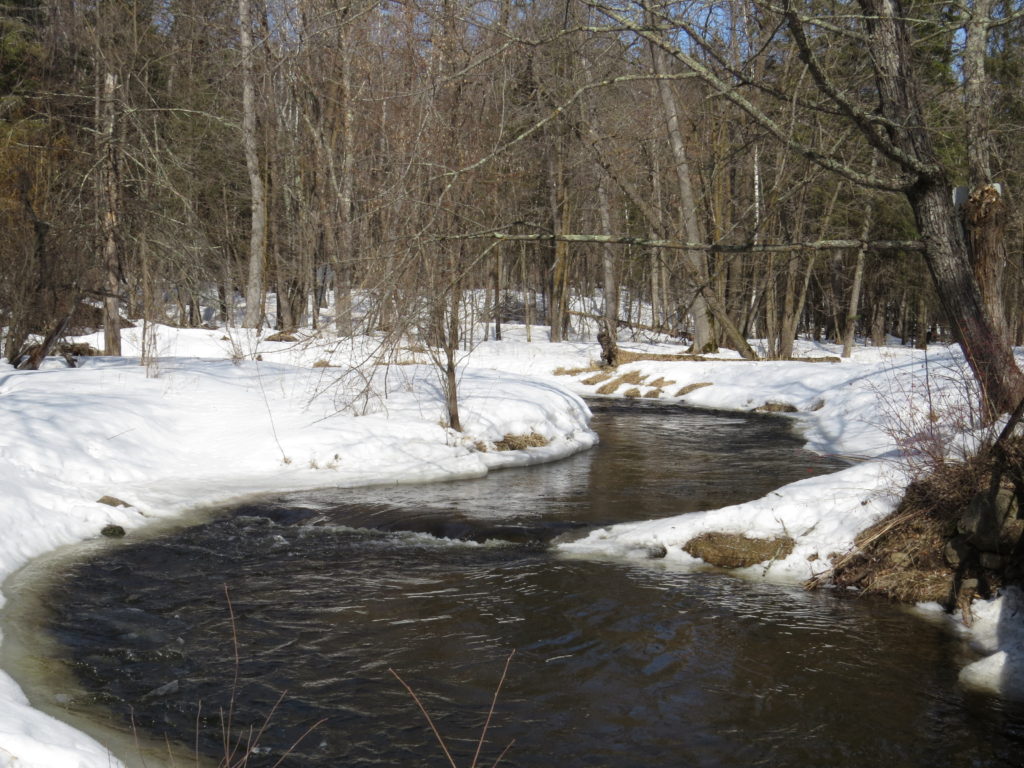
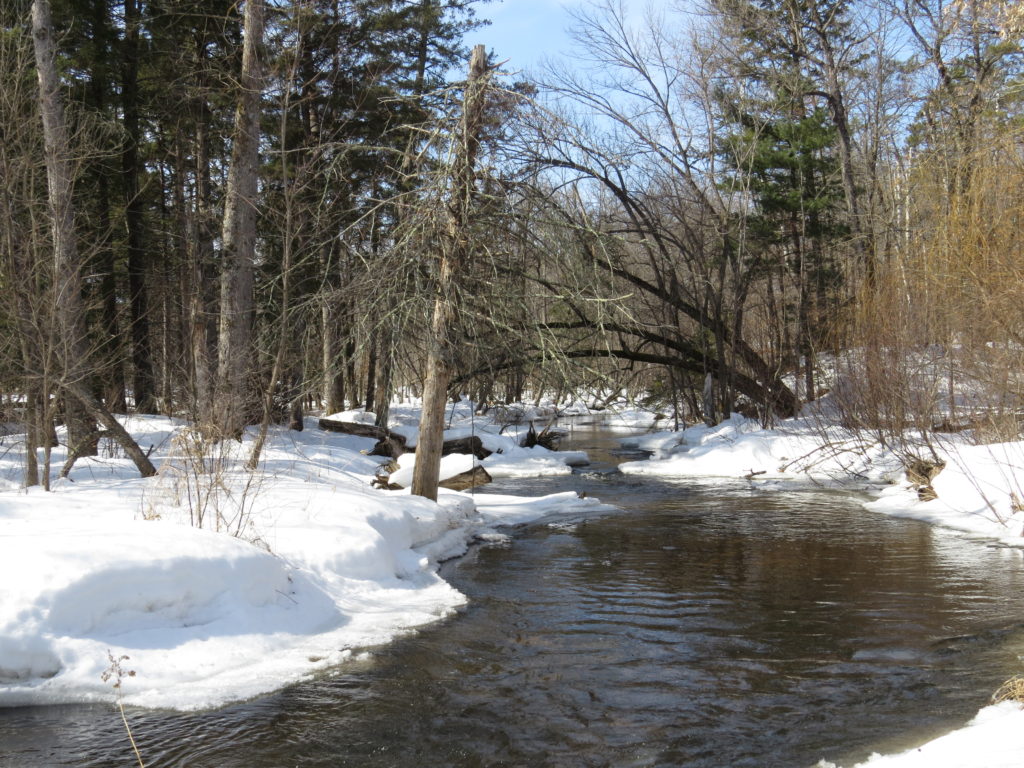
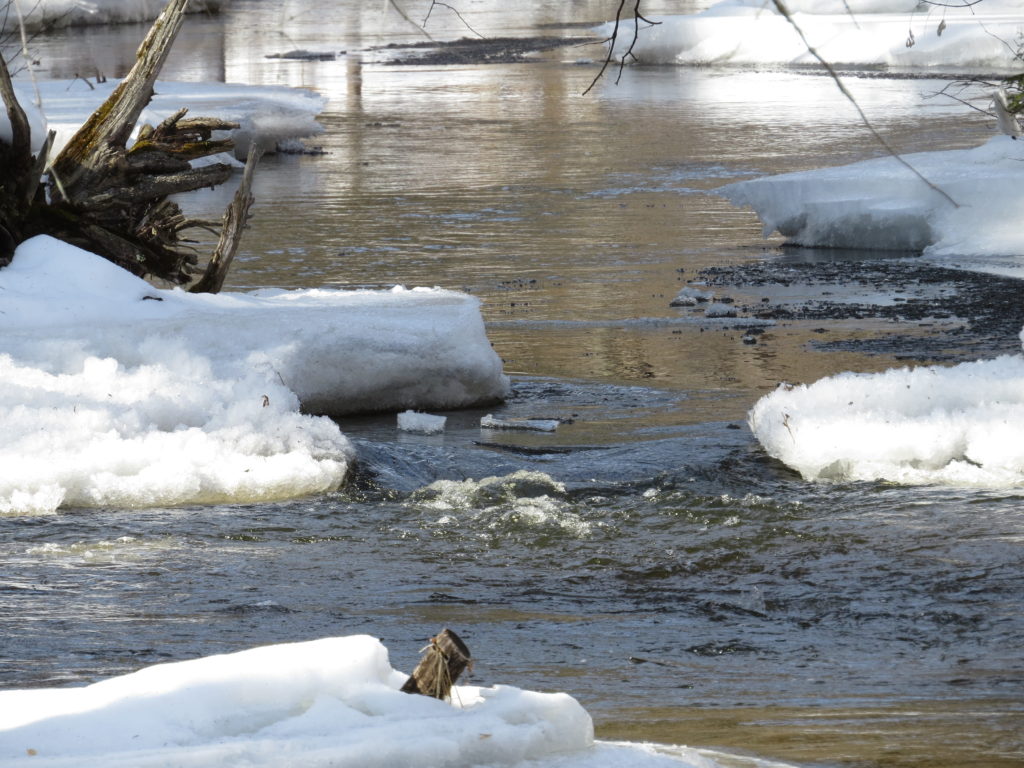
As we hiked, another striking observance was the number of huge fallen trees in the park—some broken off, others uprooted. A summer storm in 2015 and another in May of 2016 that carried with them devastating extreme winds, had toppled trees and power lines. The evidence starkly remains.
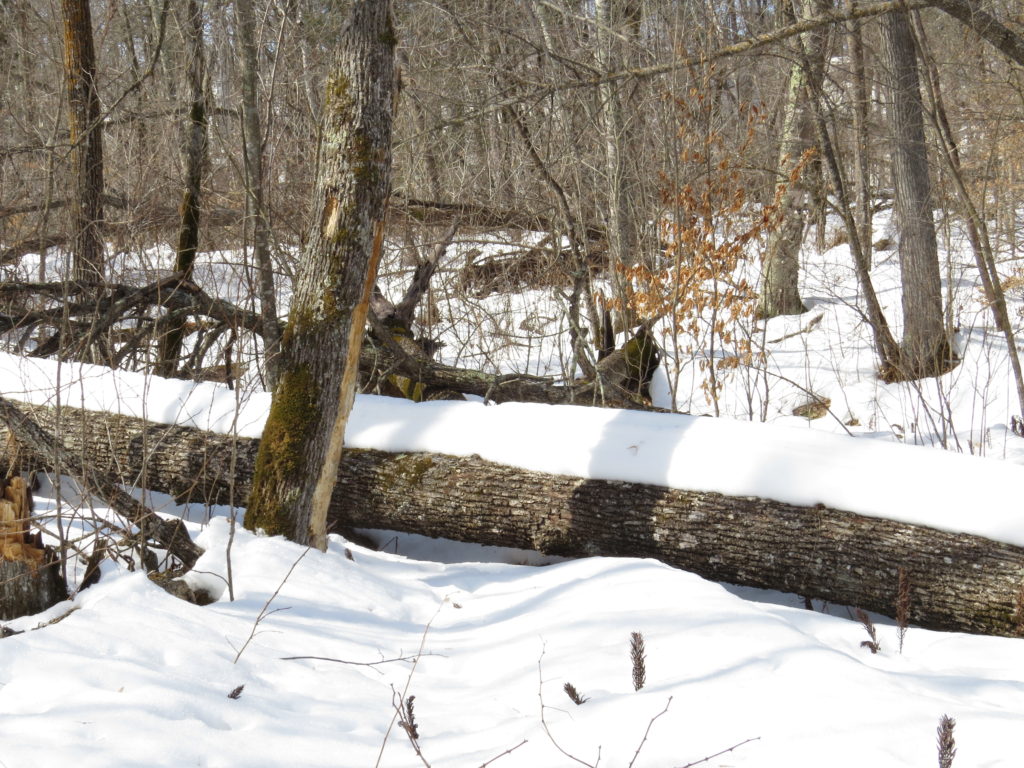
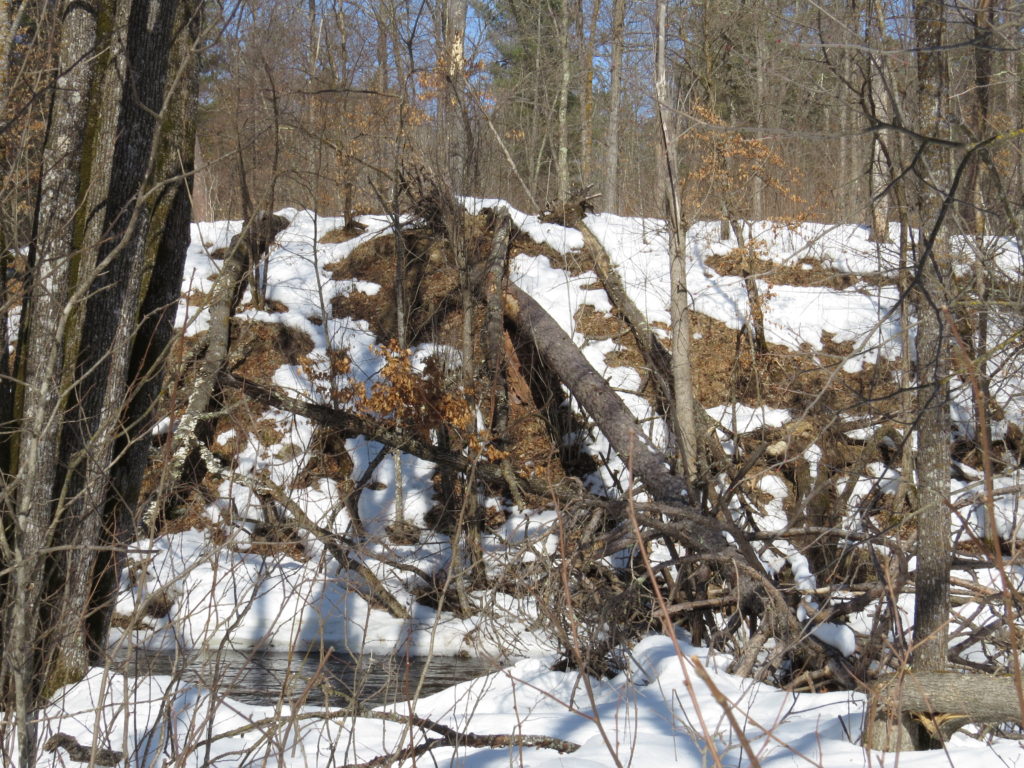
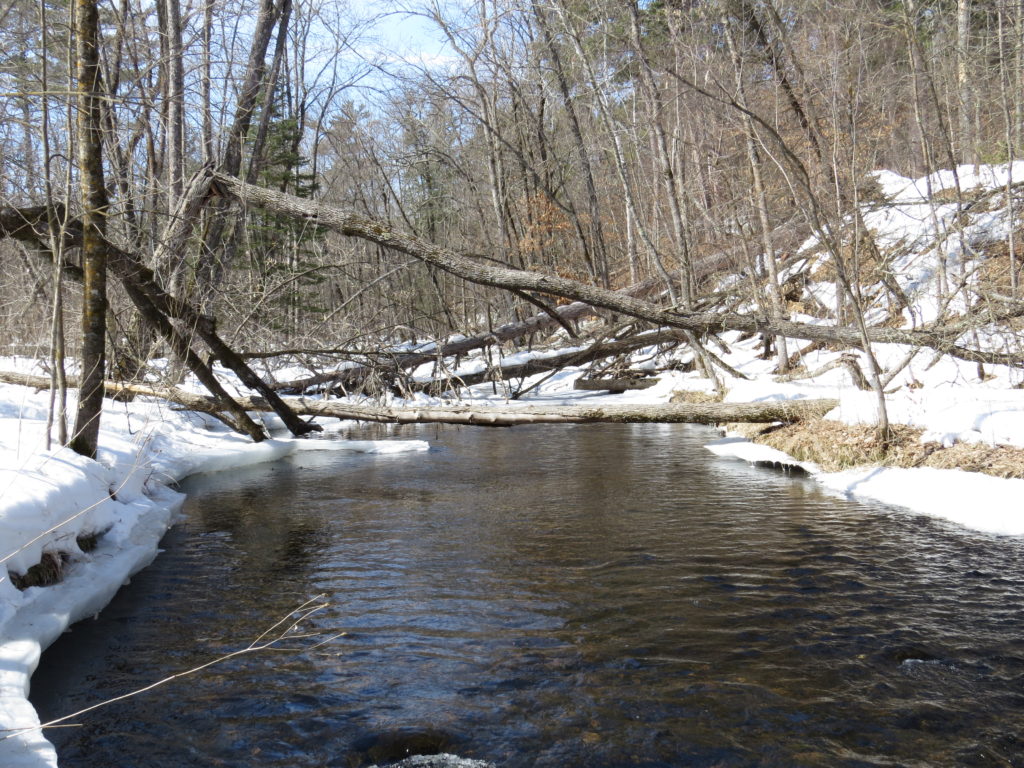
In the midst of the past destruction and the as-of-yet-ongoing Winter (despite the calendar’s announcement of the arrival of Spring), we saw great beauty. Mother Nature creates amazing art at any particular place and time of year—and at this time and place, it was intricate ice art. The brook was lined with it, and I hunkered down (first definition) at the edge of the water with camera in hand.
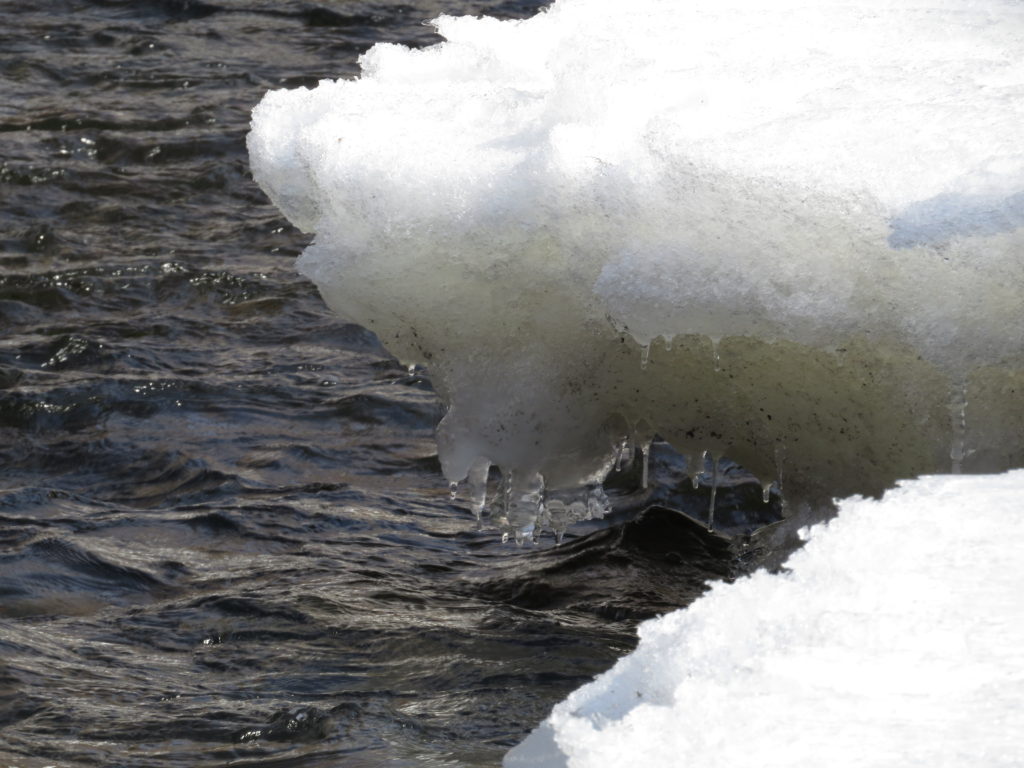
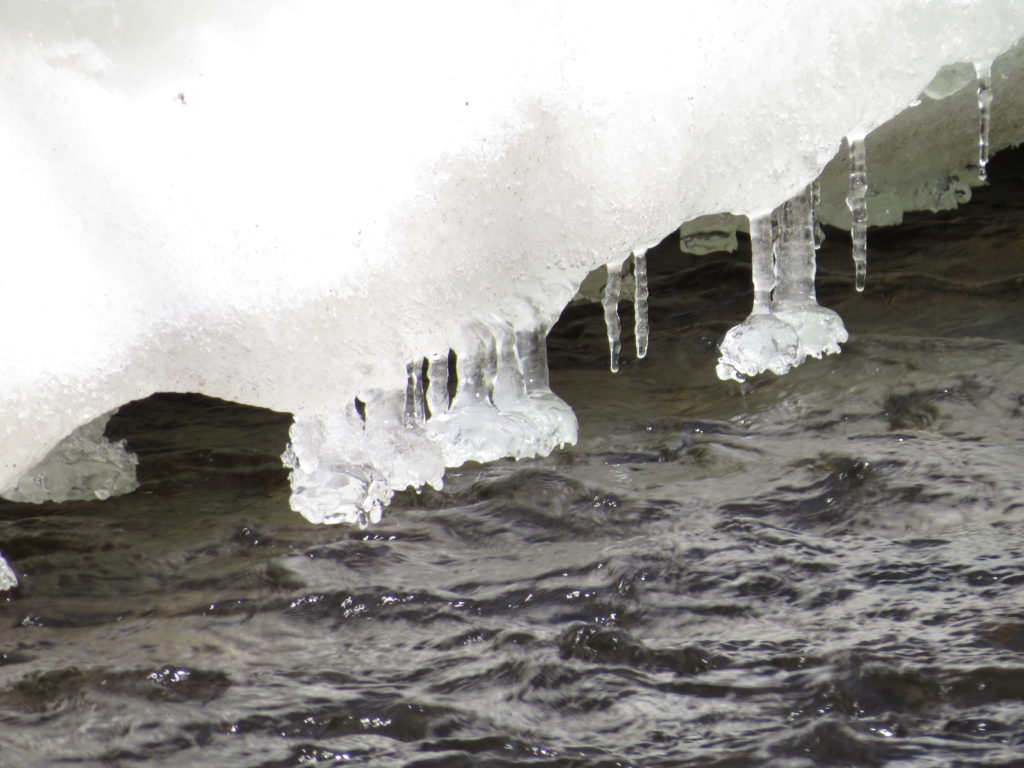
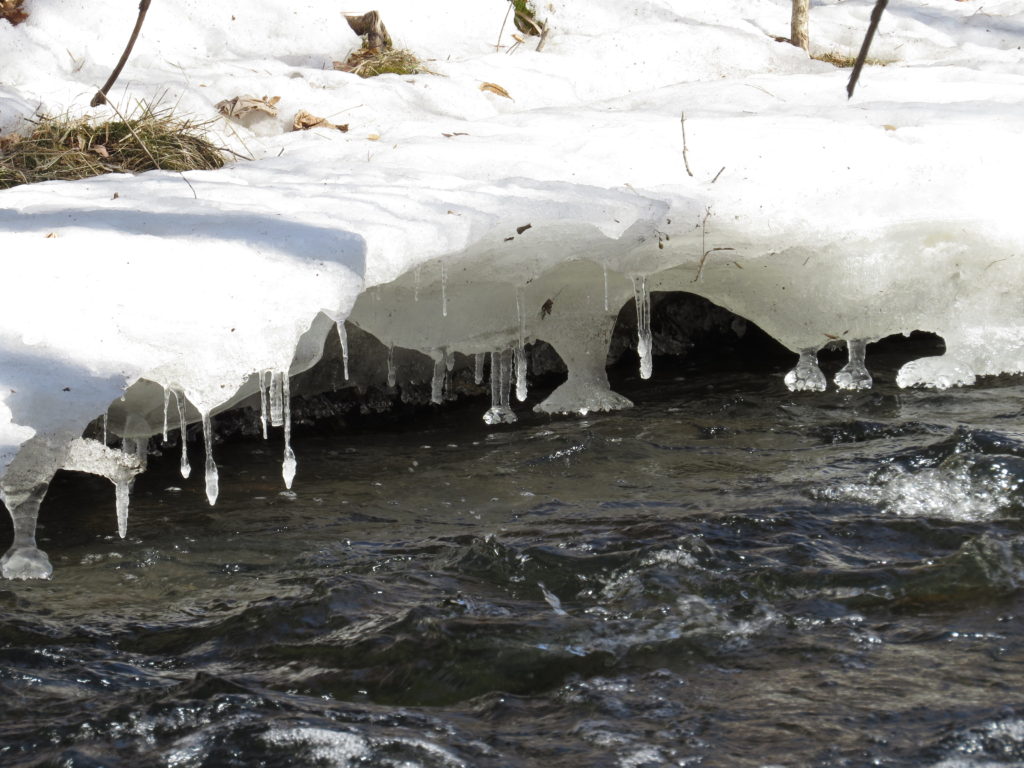
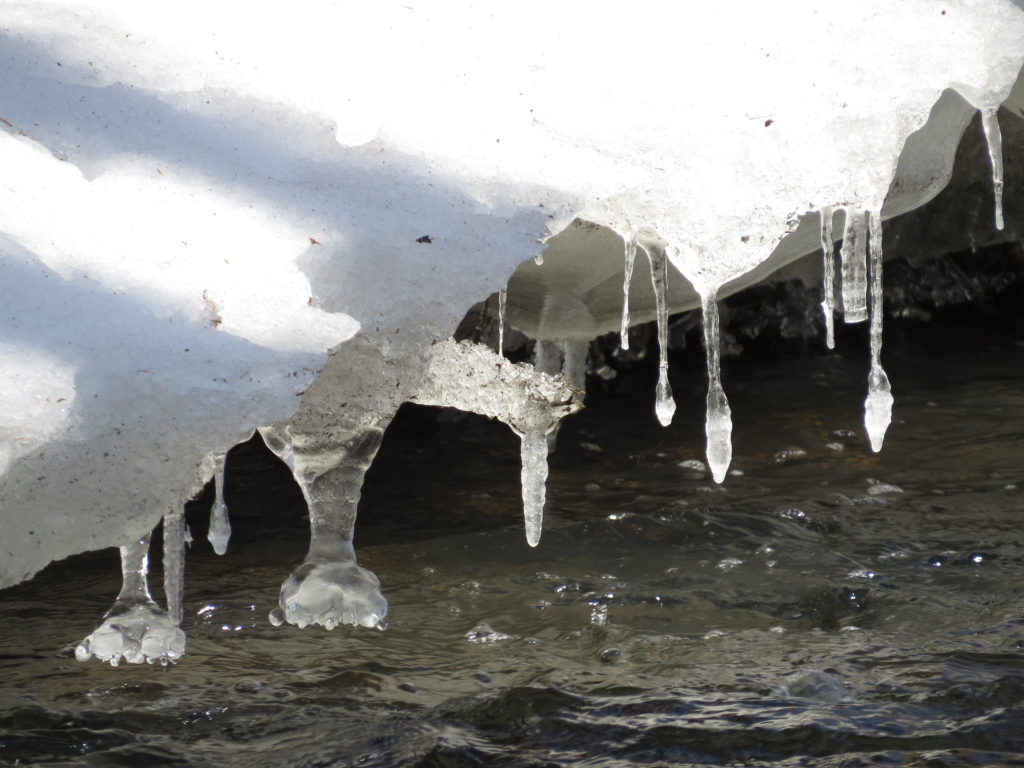
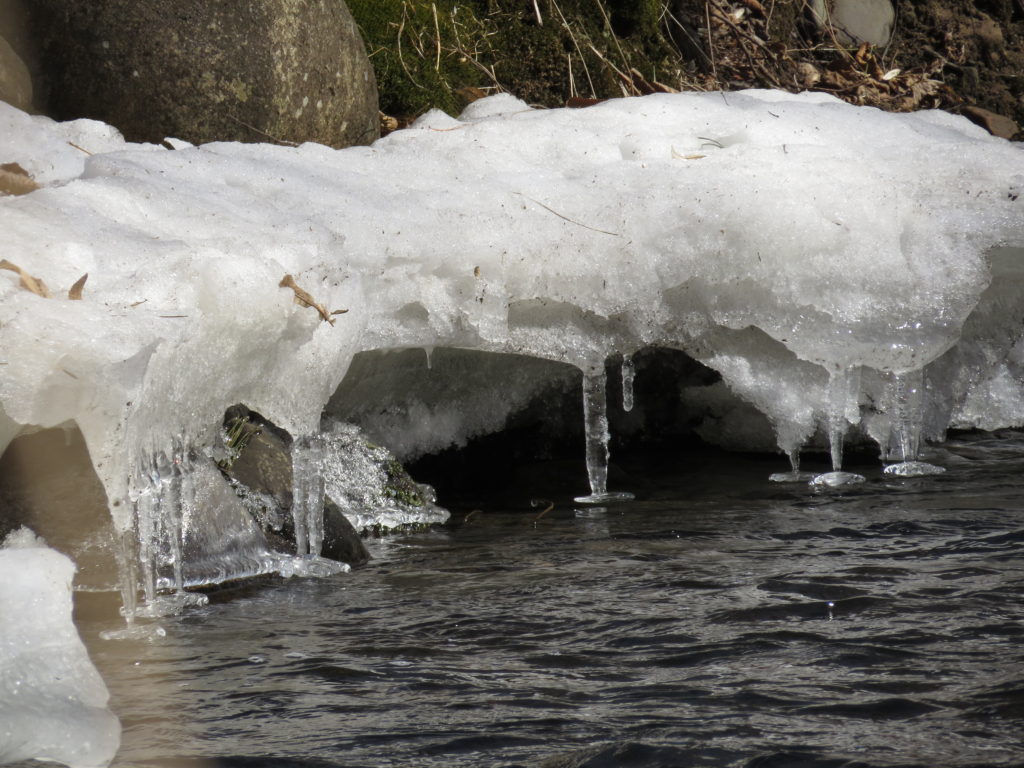
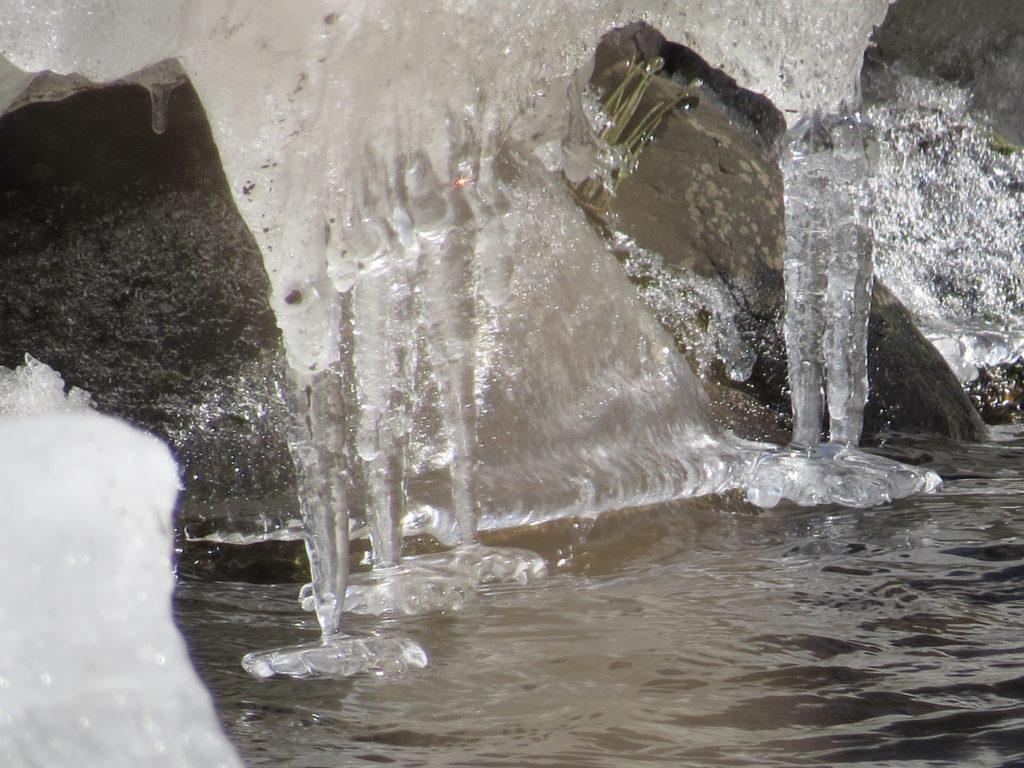
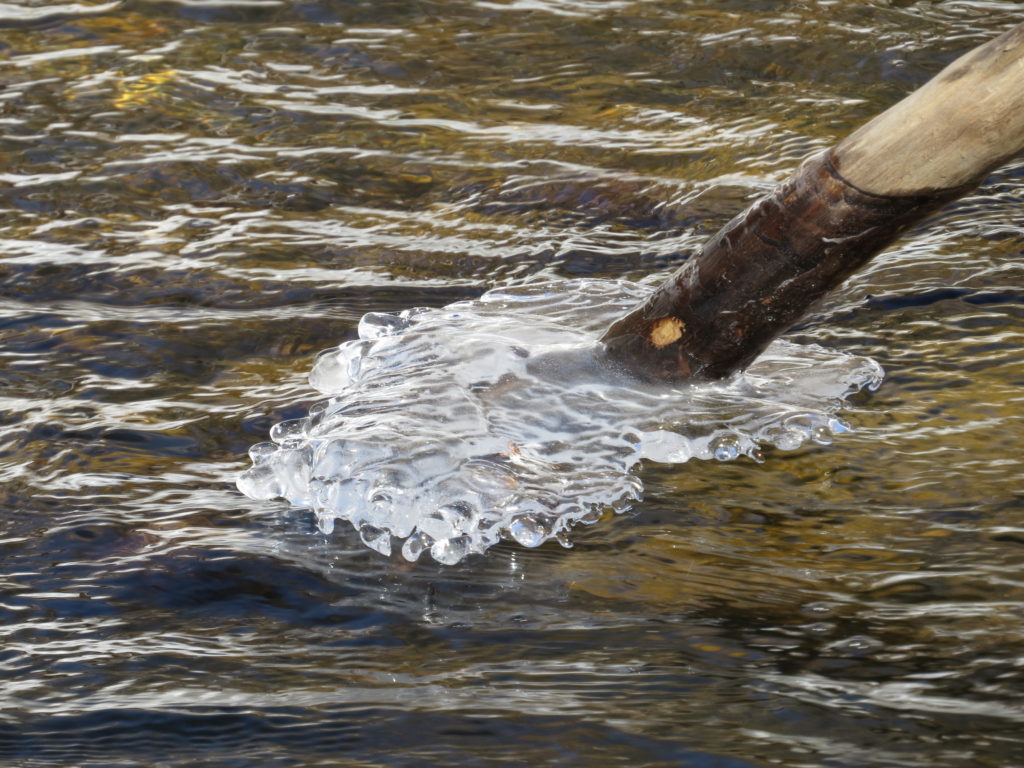
We are living in the vast gray area where things don’t fit into neat ‘us and them’ categories and when trying to incite that division falls flatly with a resounding thud to our humanity and decency. The picture is bigger now. We are all team players, like we should have been all along. It’s always been about life and death—if not physically, then spiritually, emotionally, and socially. We are losing people—the fallen—for reasons we will never understand and for reasons we should have been more prepared for. And in the midst of the fear, confusion, collapse, sickness, and death is an upsurgence of art and creativity and caring. Music, visual arts, poetry, stories, and heroism are being brought to the fore, and it’s making a difference in our isolation. The loss of lives and livelihood is tragic, but it does not have to be without meaning. With such a trauma to our world, there is no going back to the way it used to be—we have an opportunity to go forward to a new way of being with the very things that are most important to us now in this time of quarantine. Hunker down in love, self care, creativity, renewal, and charity for others—we’re all in this together with grit and meaning and motion.